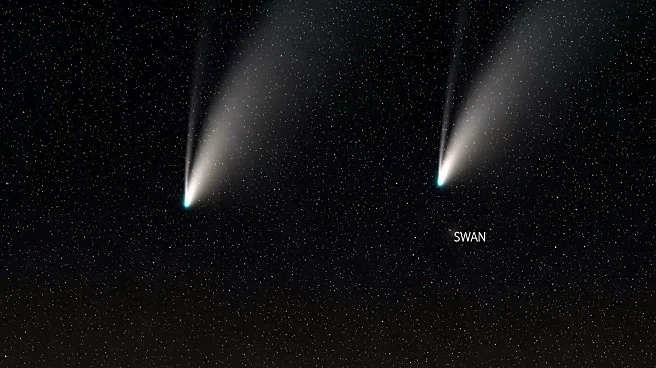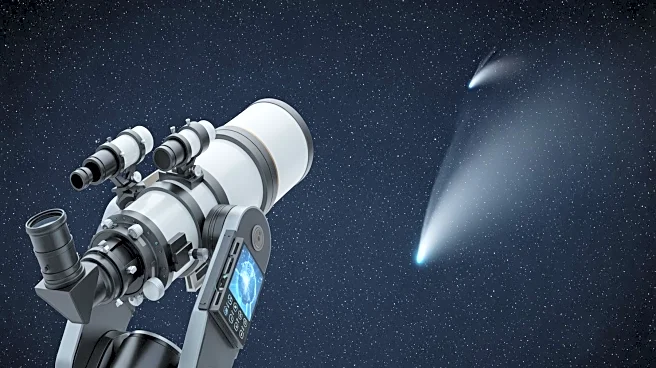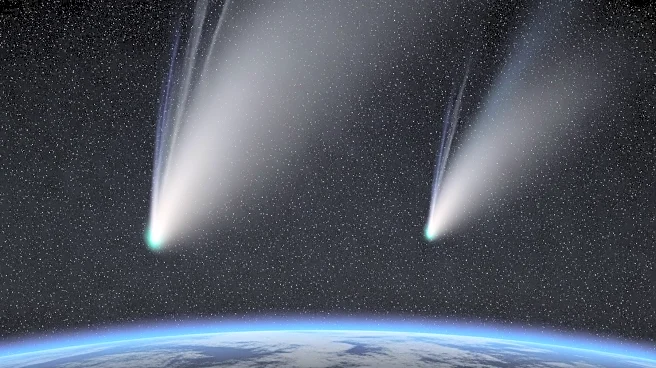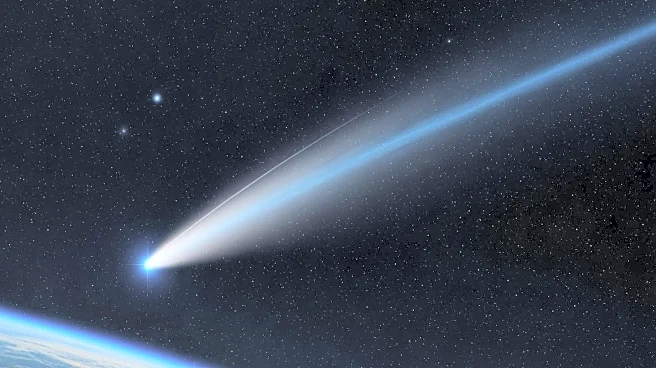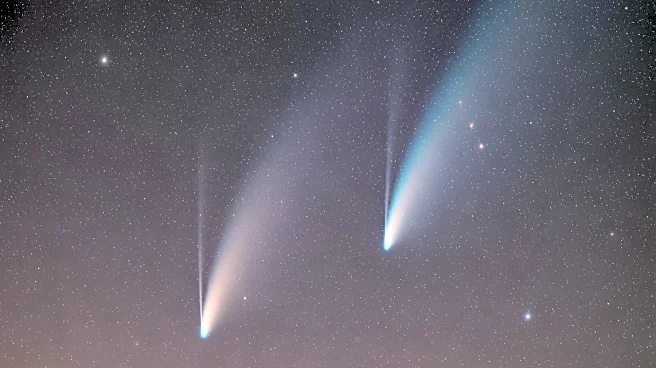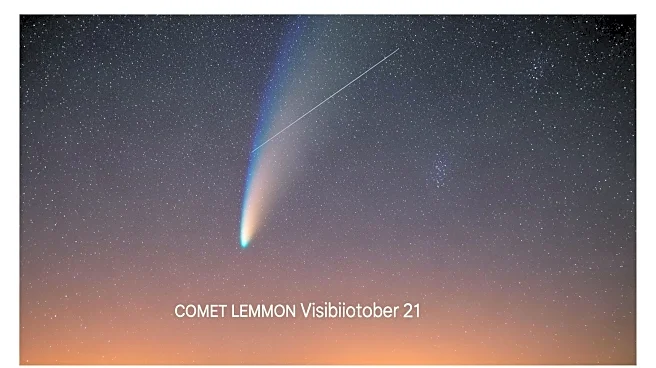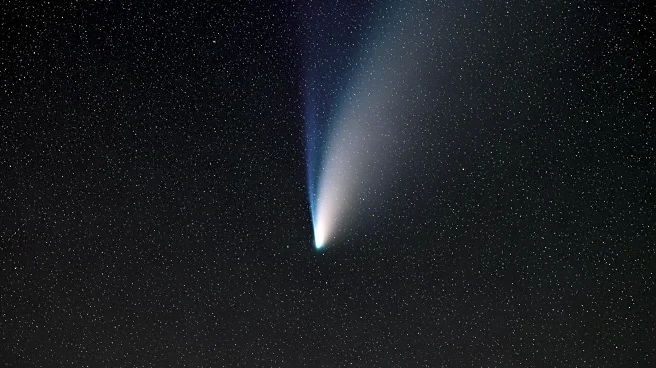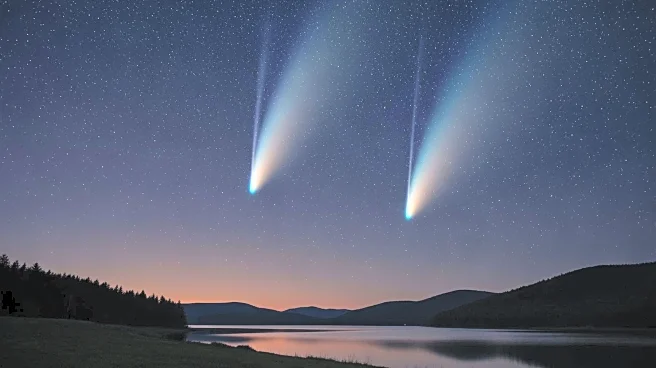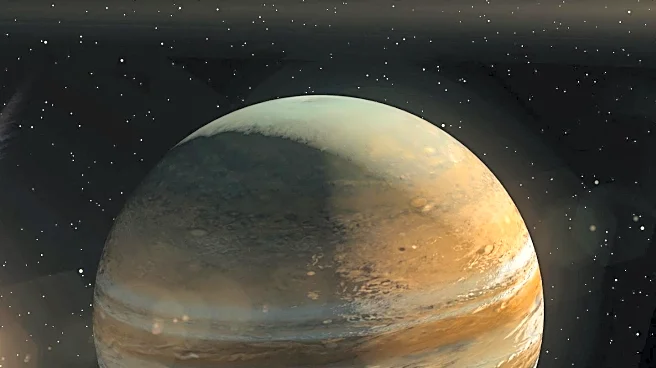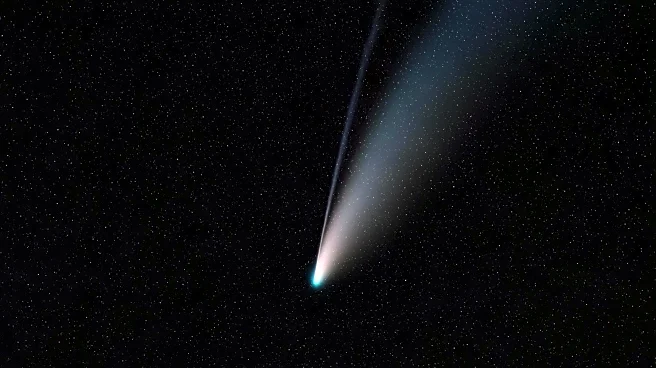What's Happening?
Two comets, C/2025 A6 (Lemmon) and C/2025 R2 (SWAN), are set to make their closest approach to Earth, providing a rare opportunity for observation. Comet Lemmon will pass approximately 56 million miles
from Earth, while Comet SWAN will come even closer at about 24 million miles. Both comets are expected to peak in brightness between October 20 and October 21, 2025. The Virtual Telescope Project, led by astronomer Gianluca Masi, will host a special livestream event on October 20 to allow viewers to watch the comets' close pass live online. Comet Lemmon was discovered in January 2025 and has been brightening as it moves through the inner solar system, while Comet SWAN was discovered in September 2025 by the Solar and Heliospheric Observatory's SWAN instrument.
Why It's Important?
The simultaneous visibility of two comets is a rare astronomical event, offering a unique opportunity for both amateur and professional astronomers to observe and study these celestial bodies. Such events can enhance public interest in astronomy and provide valuable data for scientific research. Observing comets can help scientists understand more about the composition and behavior of these icy bodies, which are remnants from the early solar system. The event also highlights the capabilities of modern astronomical tools and projects like the Virtual Telescope Project, which make space phenomena accessible to a global audience.
What's Next?
Following the closest approach, Comet Lemmon will continue its journey through the solar system, eventually looping around the sun on November 8, 2025. Comet SWAN will exit the inner solar system, continuing its long-period orbit. The Virtual Telescope Project's livestream will provide real-time observation opportunities, and astronomers may continue to track the comets' paths and study their characteristics. The event may inspire further public engagement and educational activities related to astronomy.
Beyond the Headlines
The visibility of these comets may spark discussions about the importance of space observation and the role of international collaboration in astronomy. The event underscores the advancements in technology that allow for real-time global participation in astronomical events, fostering a sense of shared scientific discovery.
